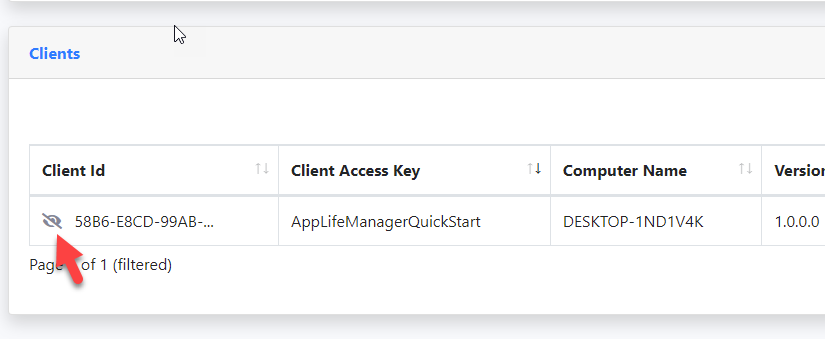

Applications are listed on the main page of the AppLife Server user dashboard. The application’s current version and number of active clients are prominently displayed in the dashboard. A publisher can access the details of an application by clicking on the Edit icon within the dashboard.
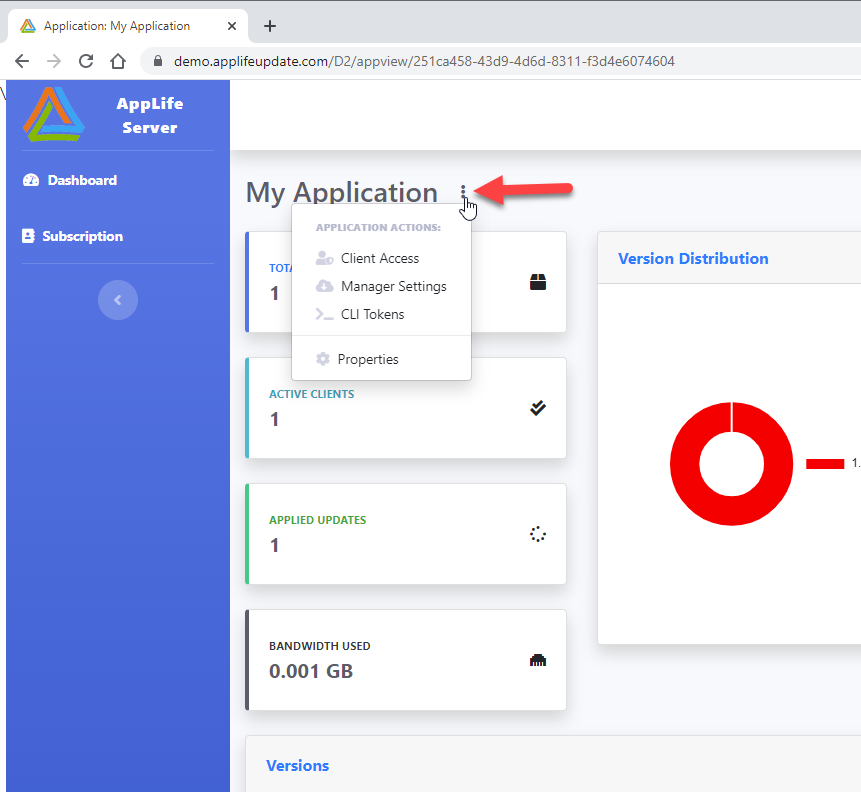
When editing an application, a publisher can modify:
•Application Name
•Inform Owner of Failed Updated
•Enable AppLife Manager Integration
Note that an Application ID cannot be changed. Application ID can only be modified when creating a new Application.
An application contains a list of Versions. This list will include all published updates for an application. It will also include an entry for any client version that has checked for updates, regardless of whether an update exists for that version. For application versions for which an update doesn’t exist, the Release Date is listed as Unknown.

For any published update version, AppLife Server will identify the total number of Active Client that are running that version, the percent of active clients, the total number of times the update has been applied, the date/time of the first and last time the update was applied.
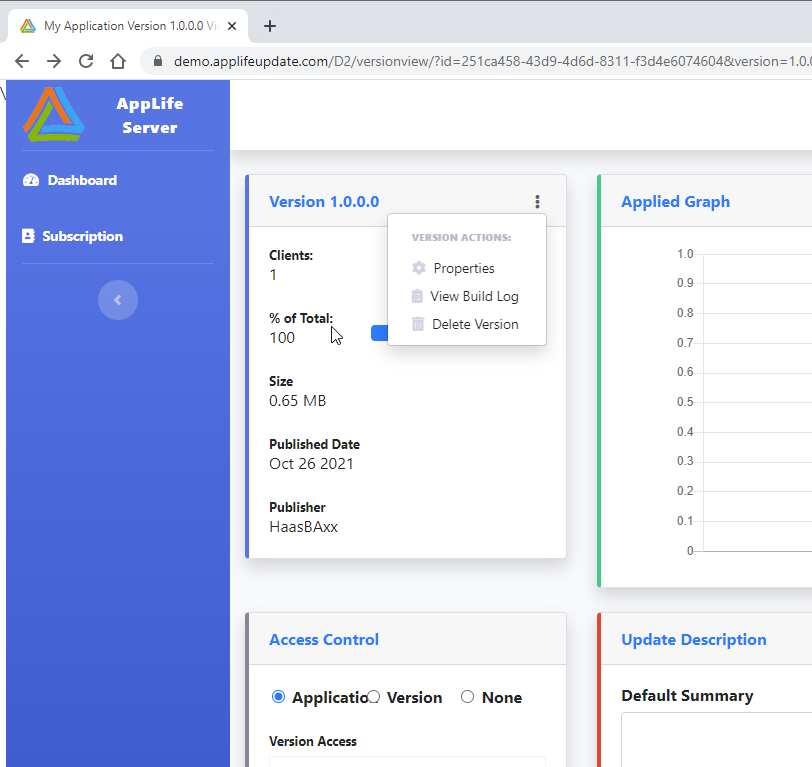
When an update is published, the following information is provided:
All of these settings can be modified through the AppLife Server dashboard.
Through the AppLife Server dashboard, a published update can be taken offline by changing the Update Access Mode to NONE. Changing this setting will prevent any deployed clients from discovering and downloading the update, effectively removing the update.
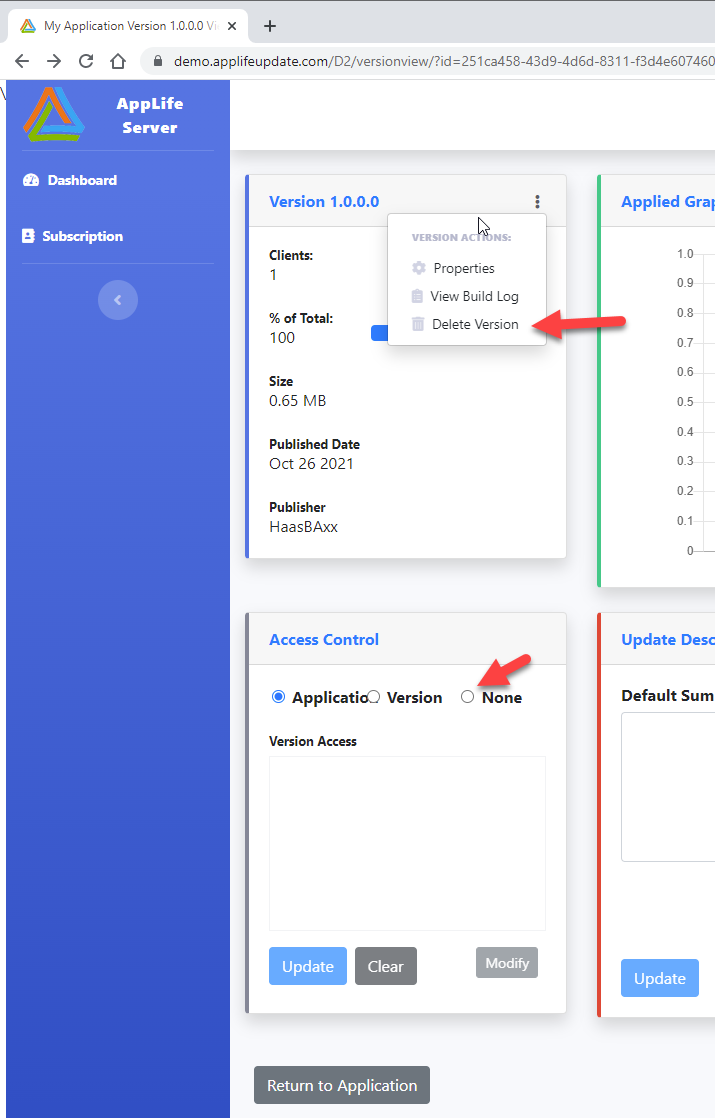
An update package can be deleted through the Action drop down option.
Access can be controlled to individual updates. The default value for Version access control is to use the access control settings of the application. It is often desirable to limit the access to an individual update package. This can be accomplished by setting the Update Access Mode of a designated version to Version. When set to Version, only clients in the selected Access Control Lists will be able to discover and download the designated update version.
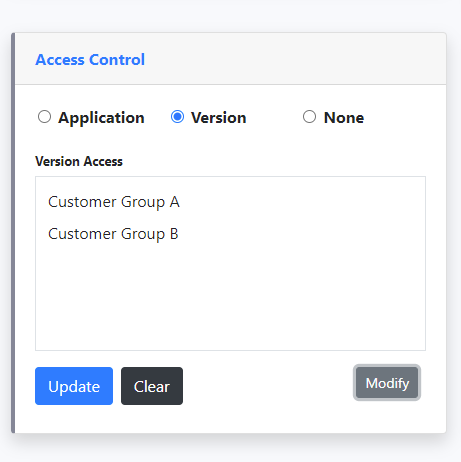
When publishing updates through AppLife Make Update, version specific Access Control can be designated during the publish process.
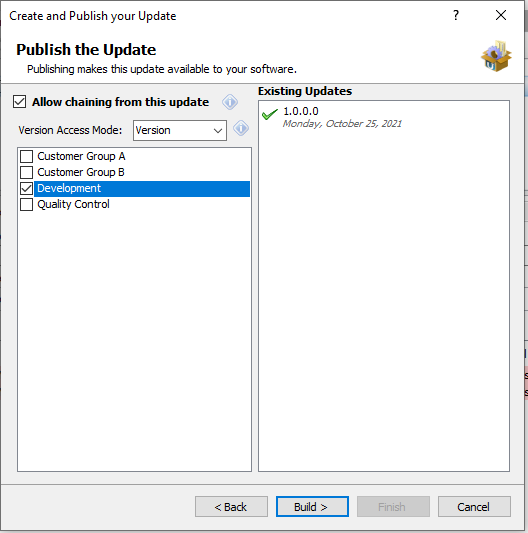
When deployed installations check the AppLife Cloud for updates, the server records and tracks their activity. This information is displayed as a Client. Clients are listed on the individual application dashboard view.
The AppLife Update Controller generates a unique Client ID based on the Hard Disk serial number and the complete path location of the main executable of the application. In addition, the Update Controller has a Client Access Key property that can be assigned as an identifier of the individual installation.
In addition to the unique identifiers, the Computer Name, current version and time stamp are recorded as clients check for updates. This information is displayed in the list of Clients.

The designated owner of an application can optionally be informed when a client reports a failed update. An email is sent when a client update fails. This feature is enabled by default. To Enable/Disable, navigate to the application properties from the Application view.
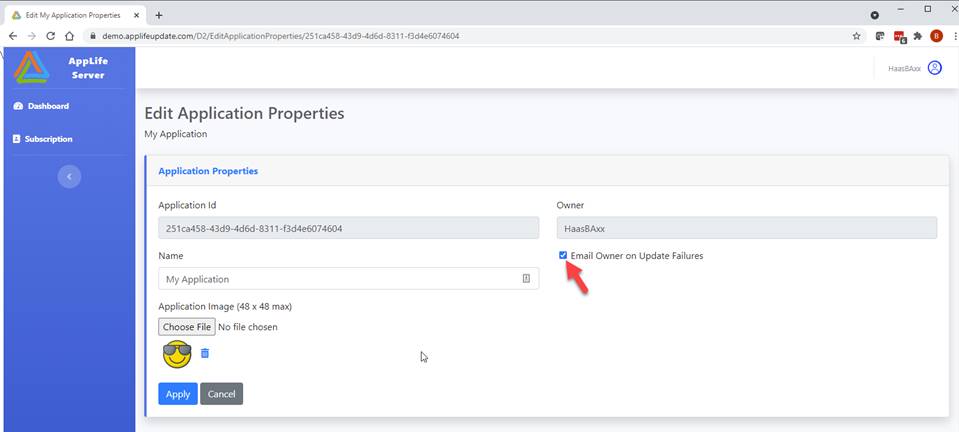
The list of Clients can be sorted by clicking on the column headers within the Clients table.
Clients can also be searched/filtered using the Search textbox above the Client table. The columns that are searched are Client ID, Client Access Key, Computer Name and Version.
Searches are commonly used to filter all clients on a specific version and to find the history of a specific client, based on Client Access Key or Client ID.

Clients filtered by version number
A Client history can be deleted from the AppLife Server by clicking on the Delete action command.
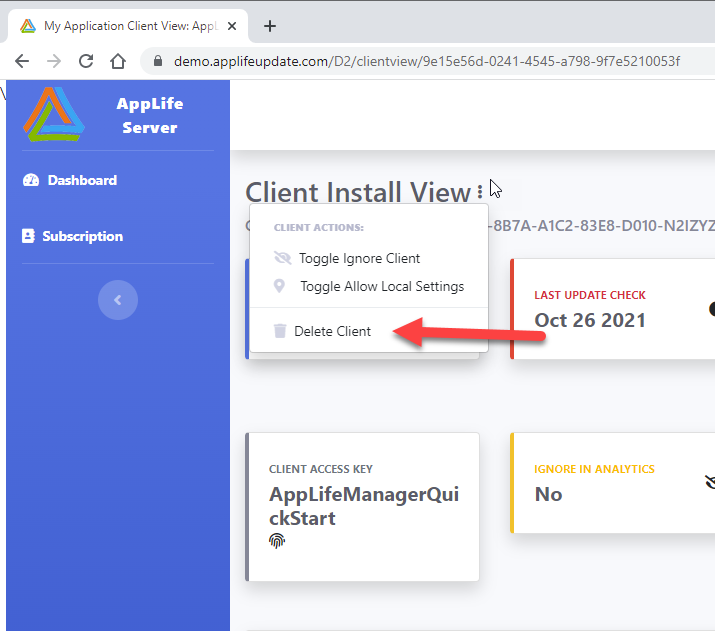
NOTE: Delete actions cannot be undone.
Designated Client installations can be selected to be ignored. When a client is ignored, the AppLife Server will still serve updates to the client, but analytical tracking is not performed. Development and testing installations are often elected to be ignored.
To ignore a client, click on the Log icon within the Client View.
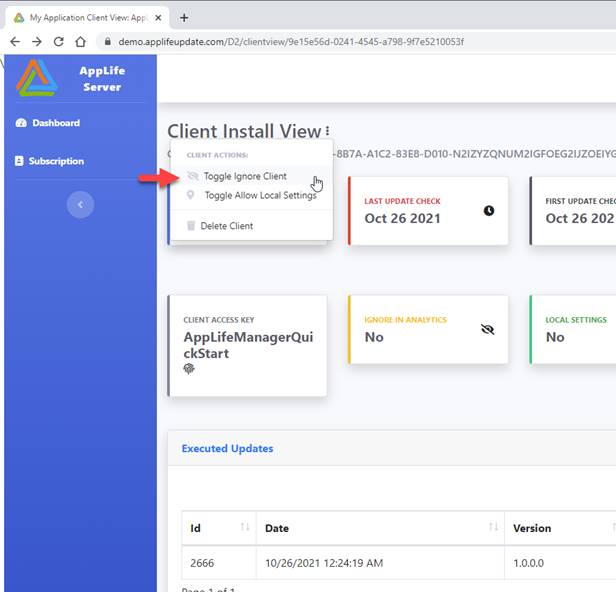
Ignored clients are annotated in the Client table.
